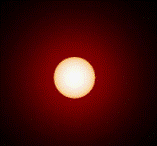Department of Physics and Astronomy: Publications and Other Research

Norman R. Simon Papers
Document Type
Article
Date of this Version
6-20-1993
Citation
The Astrophysical Journal, 410: 526-533, 1993 June 20.
Abstract
Hydrodynamic pulsation models are matched with observations of globular cluster RRc stars to derive masses, luminosities and temperatures as functions of two observables” pulsation period, P1, and Fourier phase parameter, ϕ31. We find that mean RRc masses and luminosities increase, and mean temperatures fall, with decreasing cluster metallicity. The Oosterhoff dichotomy is explained as mainly a temperature effect, while hints of a new dichotomy (in RRc mass and luminosity) are found among certain Oo II clusters. A provisional RR Lyrae distance scale emerges for the RRc stars in the form of a relation between luminosity and the two observables, P1 and ϕ31. Finally, the scheme we proposed passes three independent tests: 1) it reproduces the observed hierarchy of relative luminosity among a large sample of RRc stars in Ѡ Centauri; 2) it yields mean RRc masses which are fully consistent with the RRd masses derived for the clusters M68 and M15; and 3) it gives an LMC distance modulus in agreement with that obtained by other methods.


Comments
Copyright 1993. The American Astronomical Society. All rights reserved.